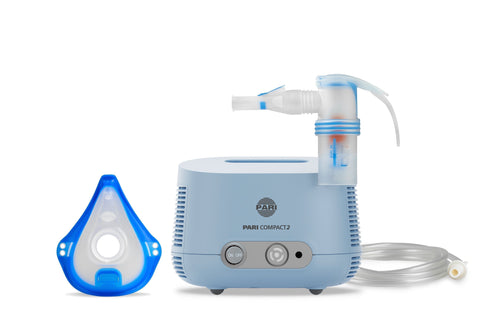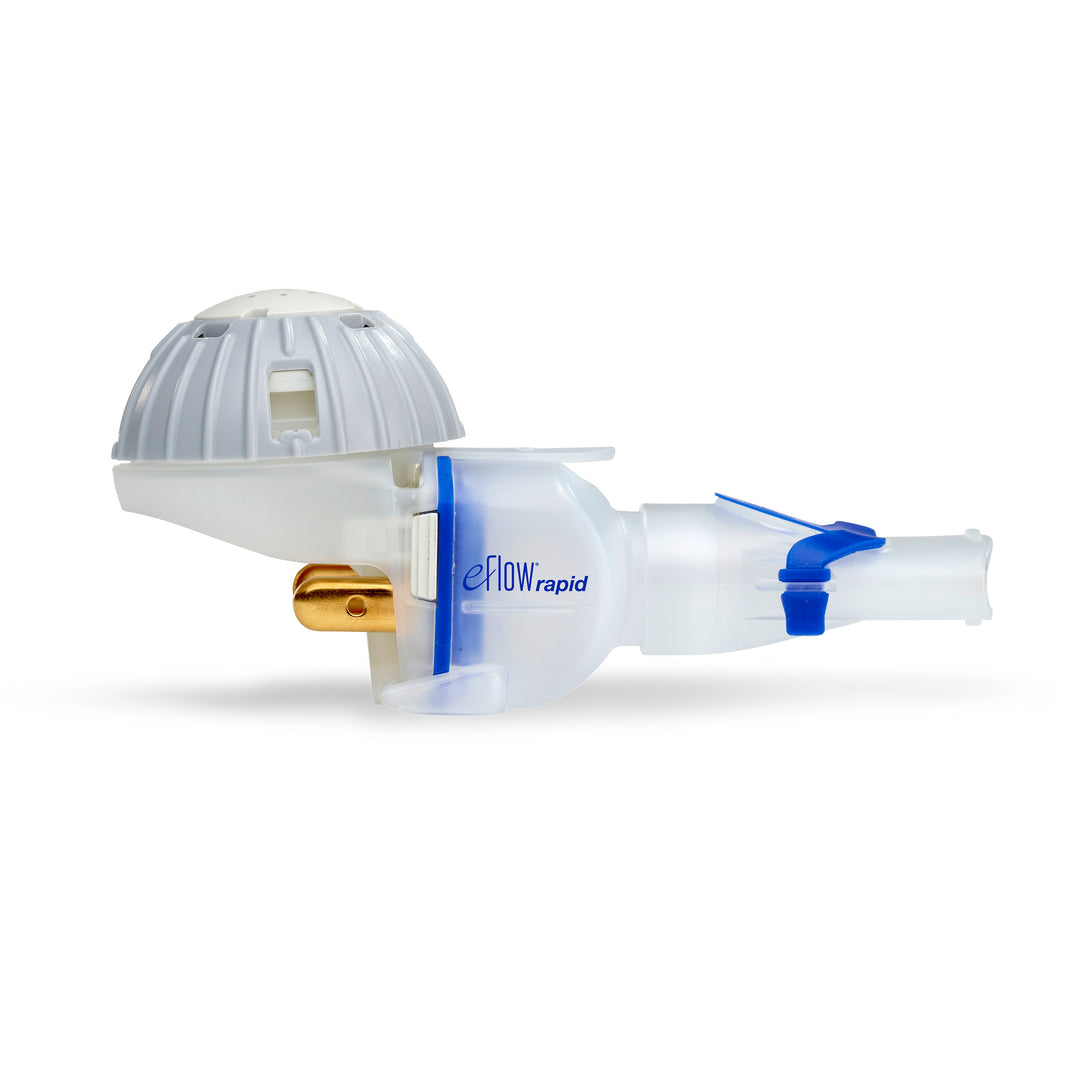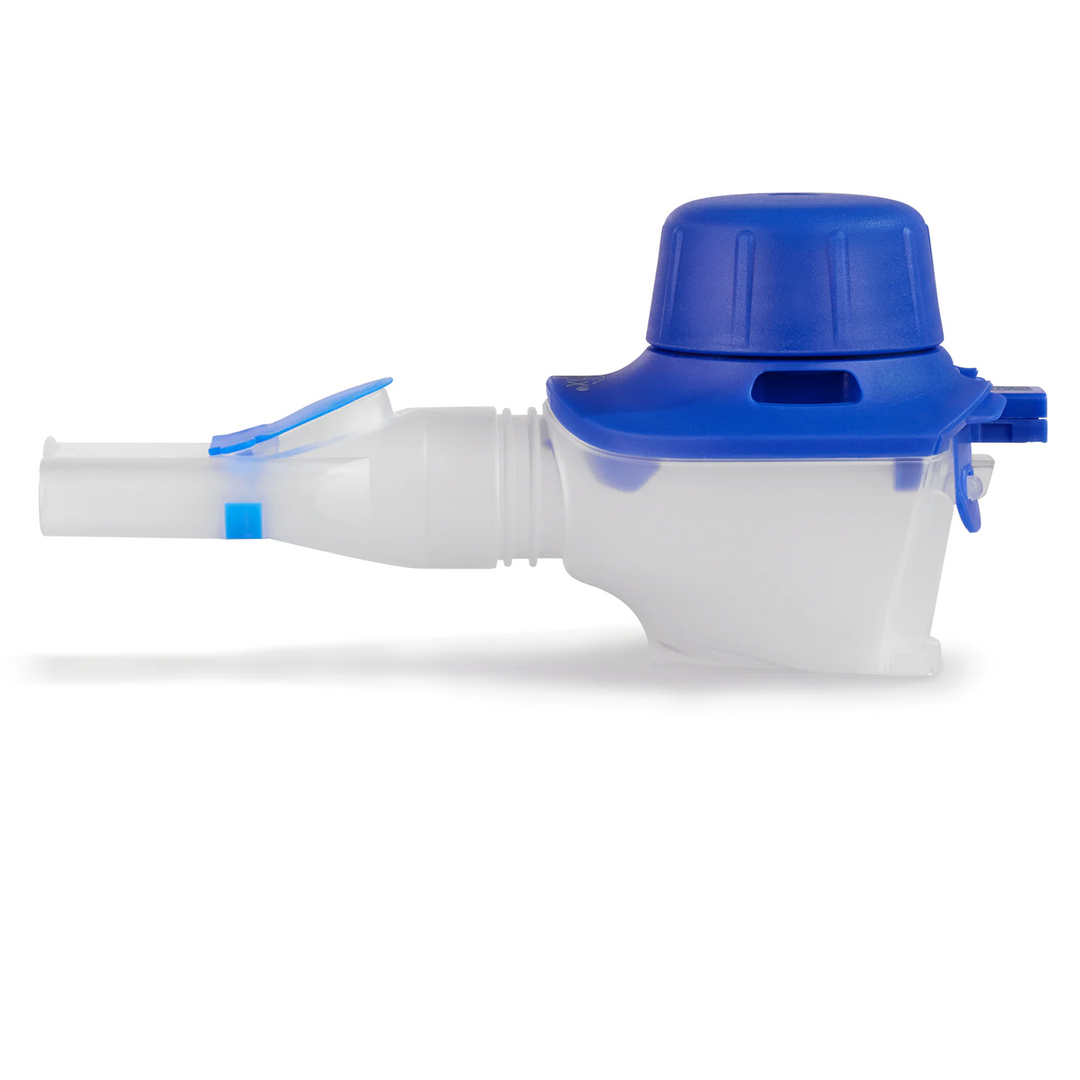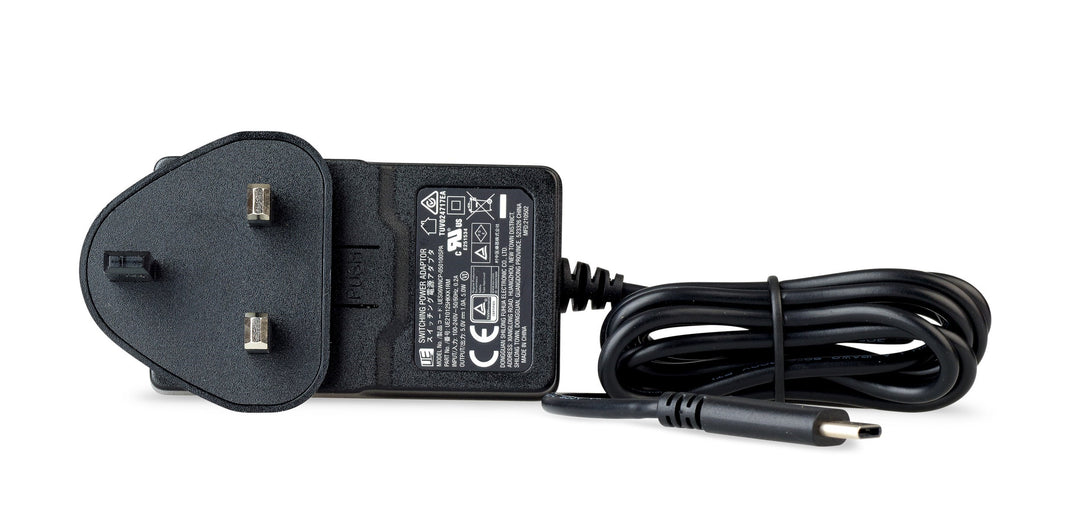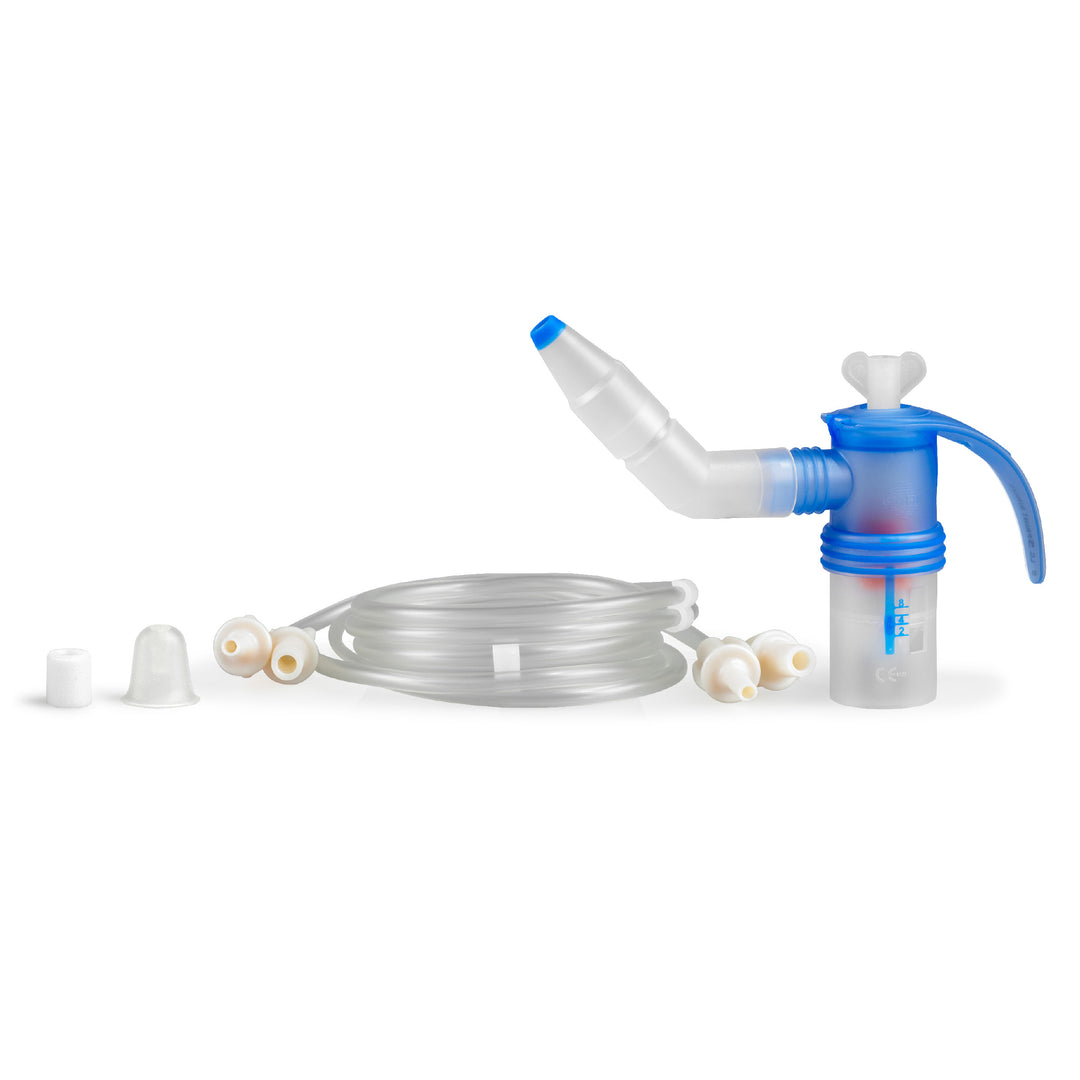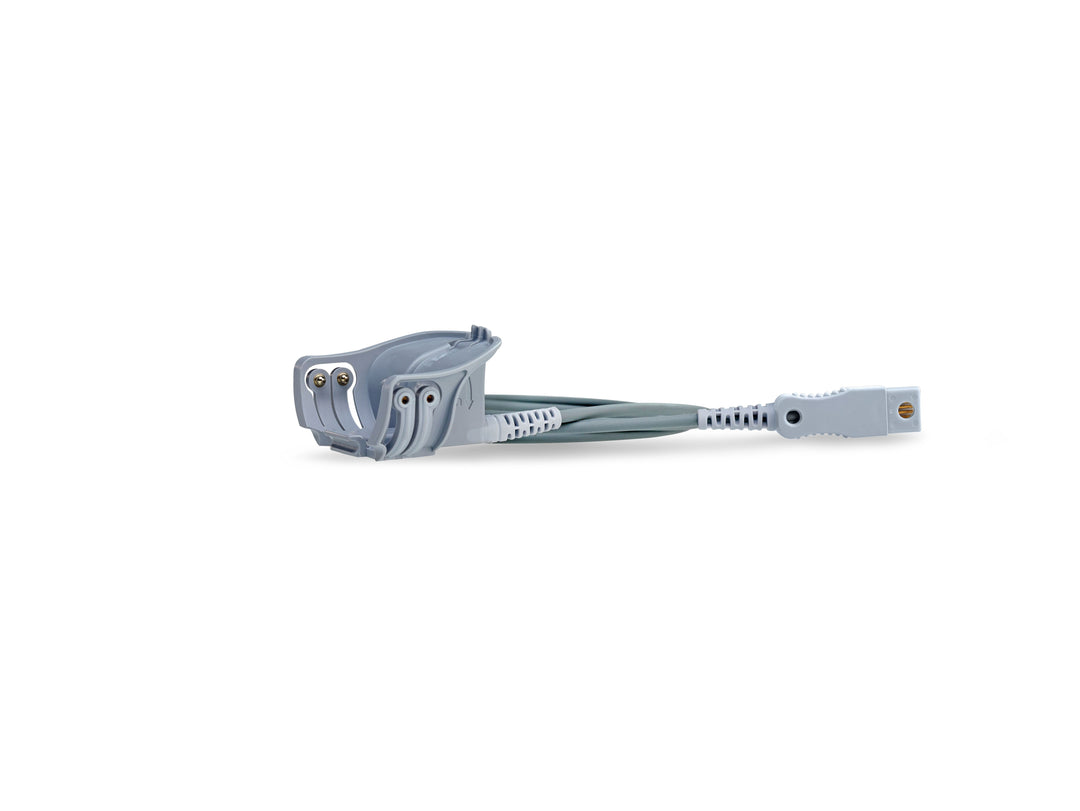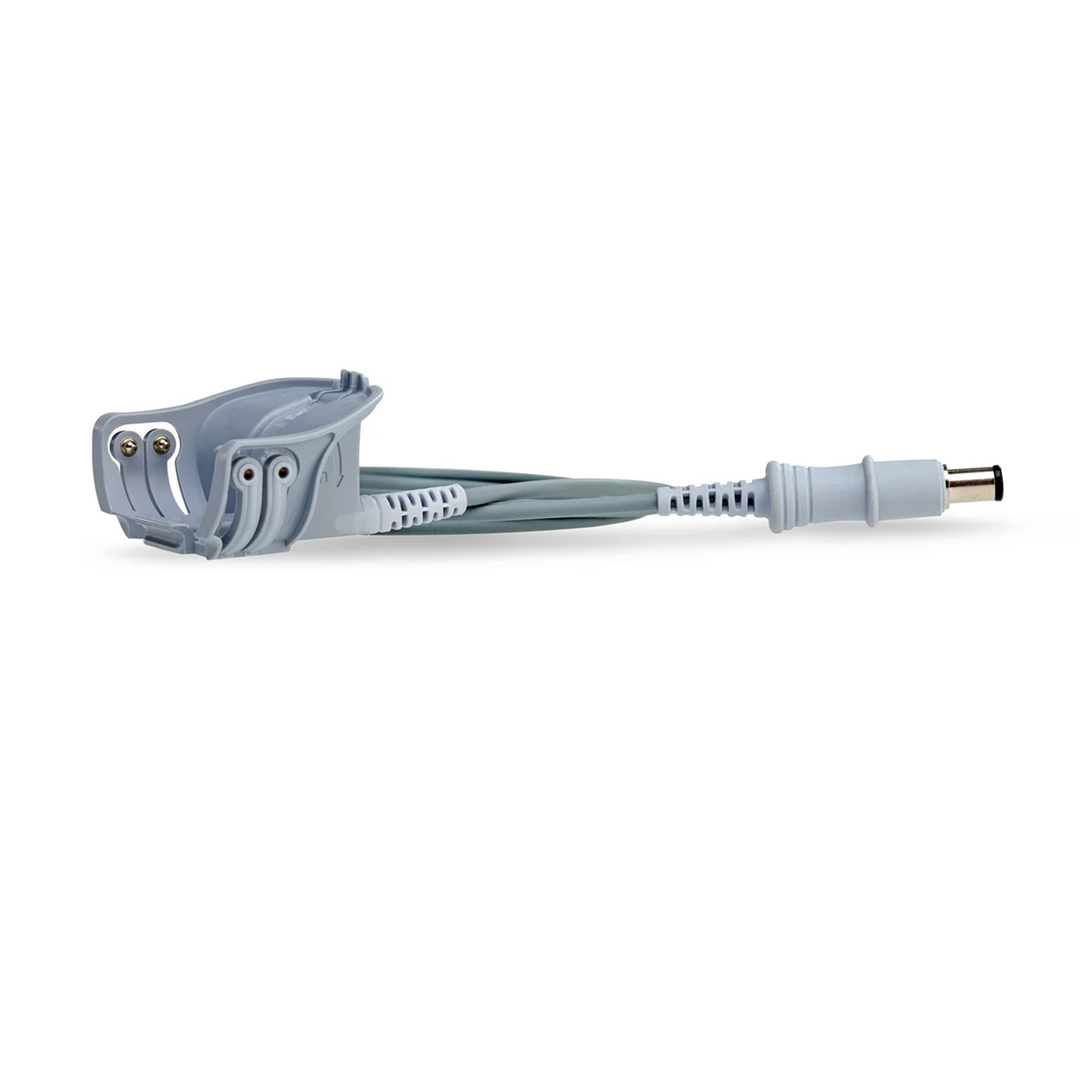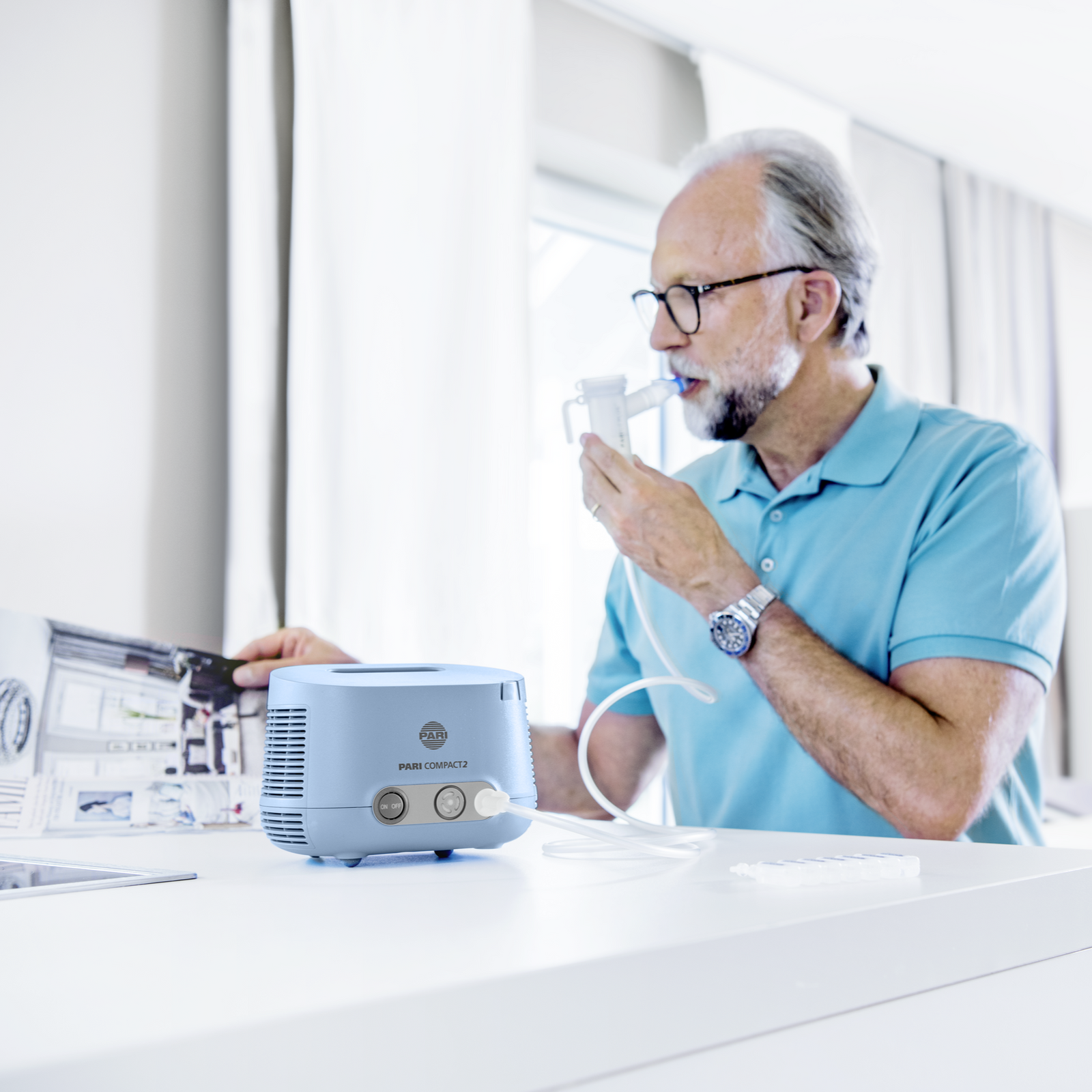
How to use and clean a nebuliser
How to use and clean a nebuliser
If you’re an adult using a nebuliser for the first time, or you need to help your child use one, you can follow this advice to help you get the most out of your device. We’ve also included a section on how to clean your device after each use.
How to use a nebuliser – steps for an adult
Step 1: Wash your hands
Before you do anything else, it’s important that you wash your hands so they are clean and germ-free.
Step 2: Sit somewhere comfortable
While using your nebuliser doesn’t take long (around five minutes depending on the amount and the type of medication you need to take), it’s important that you find a comfortable place where you can sit up straight.
Step 3: Assemble the nebuliser and plug it in
A compressor-driven nebuliser system comes with four main parts , including the compressor machine itself. You should plug the compressor in and put all the parts together. Then, put your medication in the nebuliser chamber, connect the mask or mouthpiece and then connect the tube to both the compressor and the chamber itself.
Step 4: Turn the compressor on
Now you’re comfortable and have everything ready, you can turn the compressor on.
- If you’re using a mouthpiece, you should clamp it between your teeth and make a seal using your lips.
- If you’re using a mask, place it over your nose and mouth and make sure it fits snugly onto your face.
Keeping a tight seal is important, as it prevents any mist from escaping and ensures most of it is breathed into your lungs.
Step 5: Slowly breathe in and out
The best way to use a nebuliser is to take steady, slow breaths. You don’t have to take overly deep breaths and breathing should still be comfortable. You don’t need to hold your breath for a prolonged period of time , though taking a brief pause between breaths can help to deposit the medication in your lungs effectively. If you’re using a mouthpiece, remember to breathe in through your mouth and not your nose.
Correct nebuliser technique is really important. Nebicorum offers nebulisers that have a built-in peak inspiratory flow (PIF) control. PIF control makes sure that most of the medicine ends up in your lungs rather than other parts of your airway, such as your throat. This feature activates when you breathe too quickly, and so you will feel a slight resistance. Should this happen, you should breathe out and take a slower breath in.
We advocate PIF control because it works. The feature teaches you to control your breathing, alerting you if you are inhaling too fast and therefore helping to deliver the medication to where it needs to go (your lungs).
You can learn more in our useful YouTube video on PIF control and good nebuliser techniques.
Step 6: Continue until no more mist is generated
You should continue to breathe like this until there is no more mist coming out of the mouthpiece or mask. The time it takes to use the nebuliser may depend on the type you have, the amount of medication you’re taking and other factors.Healthcare Professional
Step 7: Unplug the nebuliser and clean the individual parts
Cleaning is an essential part of the nebulising process and all the individual parts of the nebuliser chamber must be cleaned after each use. Later on this page we outline exactly how to clean and sterilise your nebuliser.

How to use a nebuliser – steps for a child
When a child is using a nebuliser, it’s important that you set up the device for them. You must supervise them at all times when they use it and you should dismantle and clean it after every use. Nebicorum nebulisers have separate inserts that are colour coordinated depending on the airway size.
|
Age Group |
Nozzle colour |
|
Babies and toddlers (up to age twofour) |
Red |
|
Small children (age two to four four to 11) |
Yellow |
|
Anyone age four and overBigger children (age 12 and above) |
Blue |
- Yellow is ideal for small children
- Red delivers extra-fine droplets for babies
- Blue can be used by children over the age of four 12
Step 1: Wash your hands
You should wash your hands, as you’ll be the one setting the device up, but you should also encourage your child to wash their hands too. This is good practice for when they’re old enough to assemble the nebuliser themselves.
Step 2: Assemble the nebuliser and plug it in
You should assemble the nebuliser ready for your child to use, putting the medicine in the chamber and plugging the machine in. You must supervise them at all times when they use it and you should dismantle and clean the device after every use.
Step 3: Sit your child in a comfortable position
Ask your child to sit in a comfortable position (or sit them on your lap if they’re very young) and hold the mask on their face for them until they are big enough to do so themselves. Masks are generally the easiest way to use a nebuliser with children and many prefer them over mouthpieces.
Step 4: Turn the compressor on
Now you have everything ready, you can turn the compressor on. Once it’s on, make sure that the mask fits snugly onto their face and that little to no mist is escaping from it.
Step 5: Encourage your child to breathe in and out slowly
You should encourage your child to breathe as normally as they can, taking slow, steady breaths that aren’t too deep or too shallow. The PIF control can still occur if children are breathing too quickly. If this happens, encourage them to breathe a little slower.
Step 6: Unplug the nebuliser and clean the individual parts
Once there is no more mist coming from the nebuliser, you can remove the mask from your child’s face and dismantle the nebuliser and clean the parts.
How to clean a nebuliser
It’s really important that you thoroughly clean and disinfect the nebuliser after every use.
Firstly, you should take the nebuliser apart and submerge it in warm soapy water . This can be left to soak for around five minutes. You shouldn’t clean the electrical unit or the connecting tube - only the nebuliser chamber that you put the medicine in.
Once it has soaked for a few minutes, you should rinse each part under warm water to remove any soap residue.
If you have cystic fibrosis, are classed as ‘clinically vulnerable’ or use the nebuliser more than once a day, it’s important to properly sterilise each part. This can be done by placing them in a pan of boiling water for five minutes or using a baby bottle steriliser (following the manufacturer’s instructions).
To dry the items, place them on a lint-free cloth or a clean tea towel to air dry. Once they’re dry, you should store them in a dust-free environment until you need to use them again. It’s a good idea to regularly check the items for signs of wear and tear or damage. The nebuliser, connection tube and compressor air filter should be replaced at least once a year.


